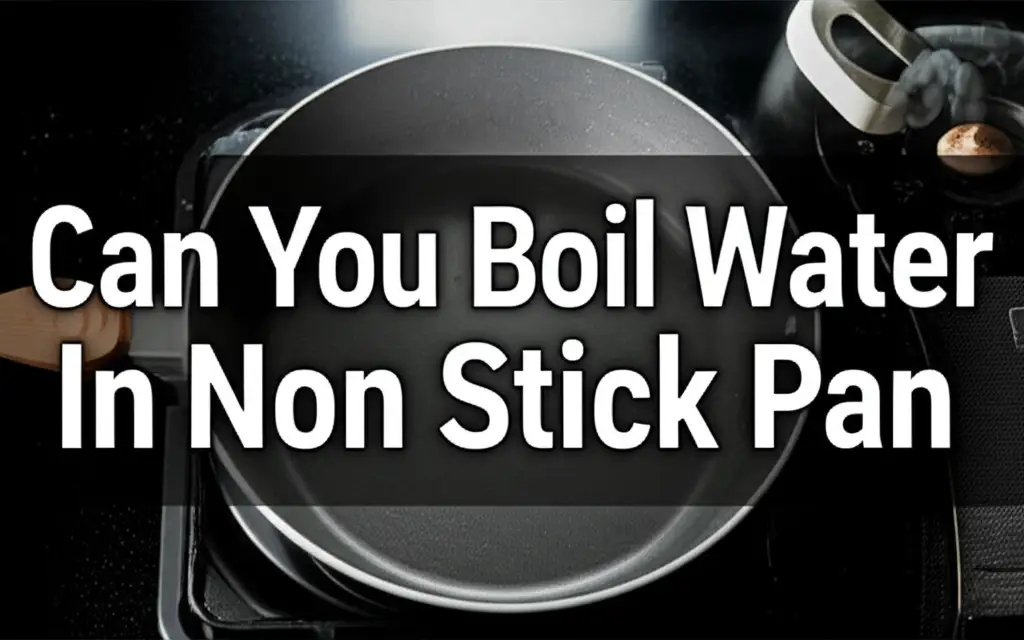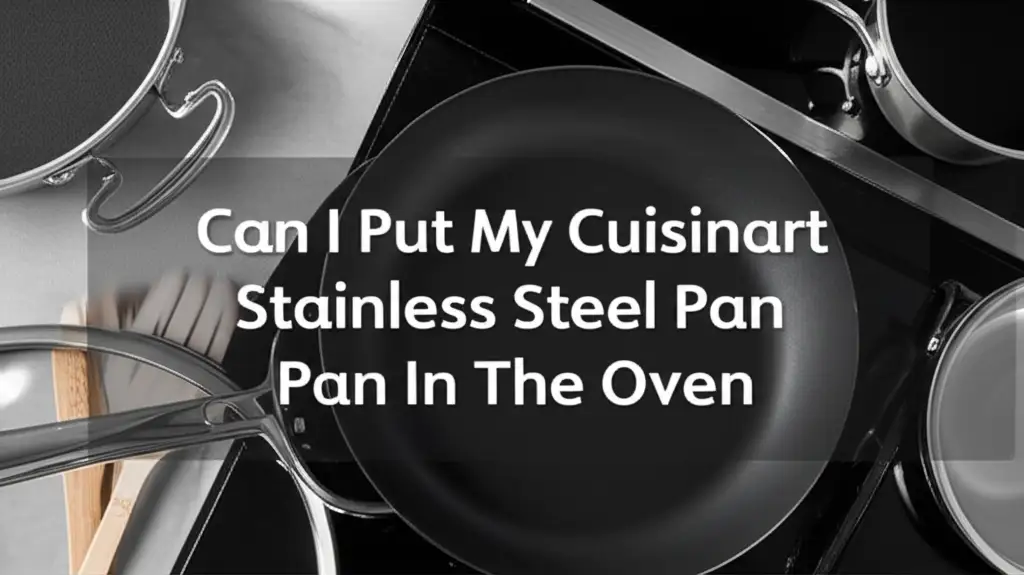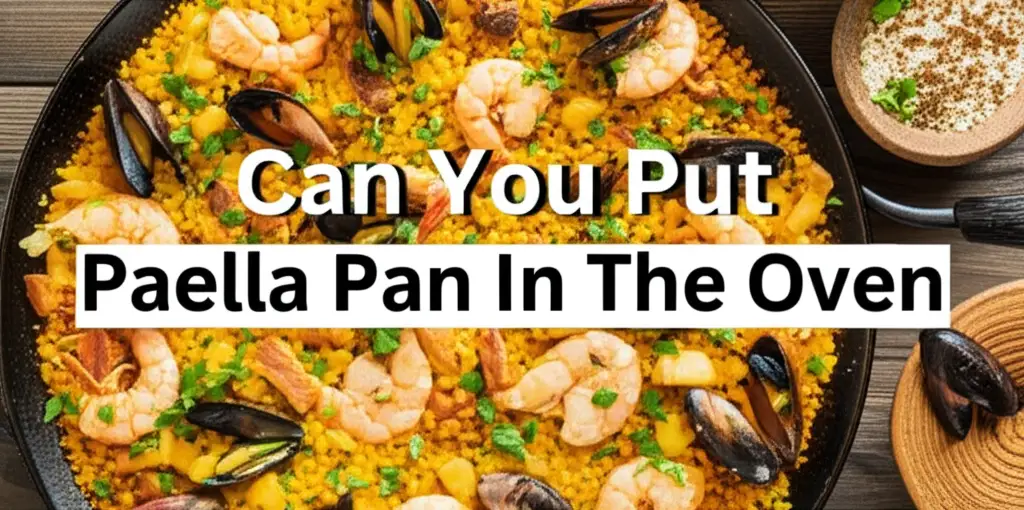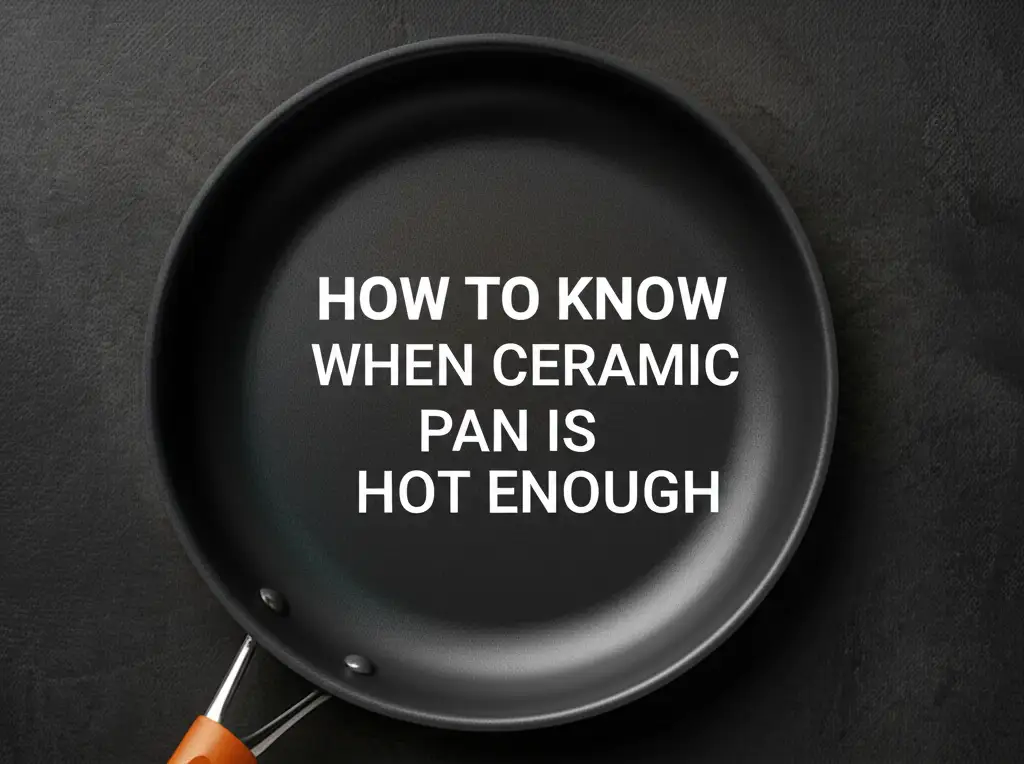· Todd Martin · Cookware Guide · 15 min read
Can Non Stick Pan Be Used On Induction Stove
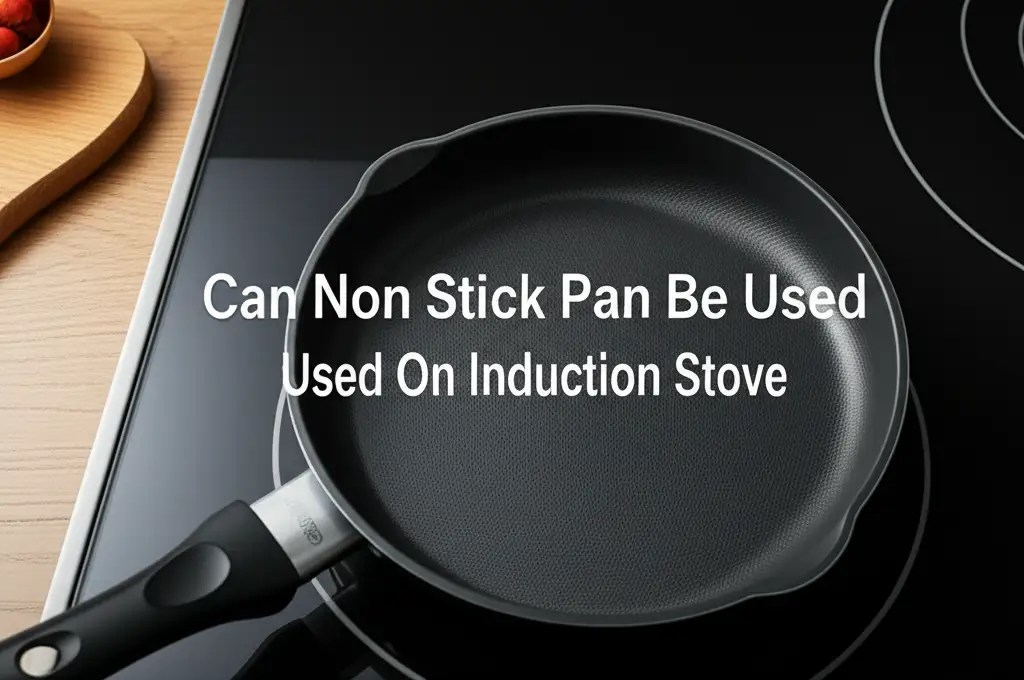
Can Non Stick Pan Be Used On Induction Stove
The rise of induction cooking has transformed many kitchens. People love its speed, energy efficiency, and safety. At the same time, non-stick pans remain a favorite for their convenience. They make cooking and cleaning easier. A common question I hear is, “Can non-stick pans be used on induction stoves?” This question often comes from home cooks upgrading their kitchen or buying new cookware.
This article will answer that question directly. We will explore how induction cooktops work. We will discuss the types of non-stick pans available. You will learn what makes a non-stick pan compatible with induction. I will explain the benefits and potential drawbacks. Finally, I will guide you on choosing and caring for the right non-stick cookware for your induction stove. Get ready to cook smarter!
Takeaway
- Check for a Magnetic Base: Non-stick pans must have a ferromagnetic (magnetic) base to work on an induction stove.
- Look for Symbols: Compatible pans often show a coil symbol, “induction,” or “Induktionsgeeignet.”
- Perform a Magnet Test: A simple kitchen magnet will stick firmly to an induction-compatible pan’s base.
- Prioritize Flatness: A flat bottom ensures good contact and even heating on induction cooktops.
- Mind Heat Limits: Non-stick coatings can degrade at very high temperatures; induction heats quickly, so use lower settings.
Yes, many non-stick pans work perfectly on induction stoves. The key factor is the pan’s base material. It must be magnetic, usually stainless steel or cast iron. If your non-stick pan has a magnetic bottom, your induction cooktop will recognize it and heat it effectively.
Understanding Induction Technology: How It Works with Cookware
Induction cooking is a fascinating and efficient way to prepare food. It does not use traditional heat elements. Instead, it uses electromagnetism. An induction cooktop has copper coils under its glass surface.
When you turn on a burner, an alternating electric current flows through these coils. This creates a magnetic field. This magnetic field is special. It does not generate heat itself. It requires a specific type of cookware to work.
For a pan to heat up on an induction stove, its base must be made of a ferromagnetic material. This means the material must be magnetic. When you place a magnetic pan on the cooktop, the magnetic field passes through it. This creates eddy currents within the pan’s base. These currents meet resistance. This resistance generates heat directly within the pan itself.
This process offers many benefits. Heat goes straight into your food, not into the air around the pan. This makes induction cooking incredibly efficient. The cooktop surface itself stays relatively cool. Only the pan gets hot. This is a great safety feature. It also makes how to clean induction stove top much easier.
Traditional electric or gas stoves heat the air around the pan. Induction heats the pan directly. This provides precise temperature control. You can change the heat setting immediately. The pan responds almost instantly. This quick response allows for very fine adjustments while cooking. Understanding this magnetic principle is the first step. It helps you see why not all non-stick pans will work. Only those with the right magnetic base will heat up.
The Science of Non-Stick Pans: Materials and Coatings
Non-stick pans are kitchen staples for many home cooks. Their main feature is a coating that prevents food from sticking. This makes cooking delicate foods like eggs easy. It also simplifies cleanup greatly. Most non-stick pans have two main parts: the core material and the non-stick coating.
The core material of a non-stick pan is often aluminum. Aluminum is a lightweight metal. It conducts heat very well. This means heat spreads quickly and evenly across the pan’s surface. However, aluminum is not magnetic. This fact is crucial for induction compatibility. Sometimes, manufacturers use stainless steel for the core. Stainless steel can be magnetic.
The non-stick coating is applied to the pan’s cooking surface. The most common type is polytetrafluoroethylene, or PTFE, often known by the brand name Teflon. PTFE creates a very slippery surface. It is excellent for preventing food from sticking. There are also ceramic non-stick coatings. These coatings use natural, inorganic materials. They are often marketed as “PTFE-free.” Silicone-based coatings are another option. Each coating has different heat tolerances and durability.
Regardless of the coating type, the critical point for induction cooking remains the base. If an aluminum pan has a non-stick coating, it needs an added magnetic plate on its bottom. This plate is typically made of magnetic stainless steel. Without this magnetic layer, the induction cooktop cannot generate the necessary eddy currents.
You might wonder Can I make my frying pan non-stick again?. While you cannot recreate the original factory coating, proper care helps. Understanding the materials helps you choose wisely. It also helps you care for your pans correctly. This knowledge ensures your non-stick pans perform well on any stove, including induction.
Compatibility Check: Do All Non-Stick Pans Work on Induction?
Not all non-stick pans work on induction stoves. This is a common misunderstanding. The non-stick coating itself has no bearing on induction compatibility. The ability of a pan to heat on an induction cooktop depends entirely on its base material. It must be ferromagnetic, meaning a magnet must stick to it.
Many traditional non-stick pans use an aluminum core. Aluminum is an excellent heat conductor. It is also lightweight and affordable. However, aluminum is not magnetic. An induction cooktop will not recognize a pure aluminum pan. It will not generate heat. This is why you cannot use your old non-induction aluminum non-stick pans on a new induction stove.
Manufacturers of induction-compatible non-stick pans address this. They bond a layer of magnetic material to the bottom of the pan. This layer is usually made of magnetic stainless steel. Sometimes, the entire pan is made of magnetic stainless steel with a non-stick coating inside. This magnetic layer allows the induction cooktop to create the eddy currents.
How can you tell if your non-stick pan is induction compatible? The easiest way is to look for symbols. Many pans have an induction symbol on the bottom. This symbol looks like a coil or a horizontal zigzag. Sometimes, it explicitly says “induction” or “Induktionsgeeignet.” If you do not see a symbol, perform a simple magnet test. Take a regular kitchen magnet. Stick it to the bottom of your non-stick pan. If the magnet sticks firmly, the pan is induction compatible. If it sticks weakly or falls off, the pan will not work on an induction stove.
Always test your pans before you cook. This simple check saves you time and frustration. It ensures your cooking experience is smooth. Also, knowing how to know if your non-stick pan is bad helps you make informed choices about replacement. Choose pans specifically designed for induction. They will have a strong magnetic base.
Benefits of Using Non-Stick Pans on Induction Stoves
Using induction-compatible non-stick pans offers a fantastic cooking experience. It combines the best features of both technologies. You get the quick, precise heat of induction. You also get the easy release and cleanup of non-stick surfaces. This combination makes daily cooking much more enjoyable and efficient.
One major benefit is precise temperature control. Induction cooktops heat instantly. You can go from a simmer to a rolling boil in seconds. Non-stick surfaces benefit from this precision. You can maintain a consistent low heat for delicate sauces. You can also quickly sear foods. This control helps prevent overheating, which can damage non-stick coatings.
Energy efficiency is another big plus. Induction stoves direct nearly all their energy into the pan. Little heat escapes into the kitchen. This means less wasted energy. Your kitchen stays cooler, especially during summer months. Non-stick pans heat quickly due to their often thinner construction. This further speeds up cooking times.
Cleanup becomes remarkably simple. Non-stick surfaces, by design, prevent food from sticking. This means less scrubbing after meals. When combined with an induction stove, spills on the cooktop surface do not burn on. The cooktop itself stays cool enough to touch around the pan. You can wipe spills away easily. Learn how to clean non-stick pan before first use to maintain this ease.
Lastly, non-stick pans on induction provide even heating, assuming a good magnetic base. The magnetic field creates uniform heat across the pan’s bottom. This helps prevent hot spots. Your food cooks more consistently. Whether you are frying eggs or sautéing vegetables, you get reliable results. The combination makes for a very user-friendly cooking setup.
Potential Drawbacks and Considerations
While using non-stick pans on induction stoves offers many advantages, there are some points to consider. These drawbacks are not deal-breakers. However, understanding them helps you make better choices. It also ensures proper care for your cookware. Knowing these factors will help your non-stick pans last longer.
One main consideration is the lifespan of non-stick coatings. Non-stick pans are not designed for extremely high heat. Induction cooktops generate heat very quickly and intensely. If you use the highest settings frequently, you risk damaging the non-stick coating. Overheating can cause the coating to break down. This reduces its non-stick properties. It can also release fumes. Always use low to medium heat settings for non-stick pans on induction.
Another potential issue is warping. Some non-stick pans have a thin aluminum core with a magnetic stainless steel disc attached to the bottom. Rapid, intense heating on induction can sometimes cause this disc to expand unevenly. This can lead to warping of the pan’s base. A warped pan will not sit flat on the induction surface. This reduces heat transfer efficiency. It can also cause uneven cooking. To prevent warping, avoid preheating empty pans on high heat. Let pans cool naturally before washing them.
The quality of the magnetic base can vary. Some cheaper non-stick pans might have a very small magnetic disc. This can lead to uneven heating, despite the induction technology. The heat will concentrate only where the magnet is. This defeats the purpose of induction’s even heat distribution. Invest in pans with a full, thick magnetic base for best results.
Finally, you must be careful with utensils. Non-stick coatings are delicate. Metal utensils can scratch them easily. Scratches degrade the non-stick surface. They also expose the underlying material. Always use wood, silicone, or plastic utensils with your non-stick pans. Even Can we use steel spoon in non-stick pan? is a common question, and the answer is usually no. Proper care helps prolong your pan’s life.
Choosing the Right Non-Stick Pan for Your Induction Cooktop
Selecting the perfect non-stick pan for your induction stove is important. It ensures optimal performance and cooking results. Do not just grab any non-stick pan. You need to look for specific features. These features guarantee compatibility and durability. A good choice will make your cooking experience enjoyable.
First and foremost, check for induction compatibility. As discussed, this means the pan must have a magnetic base. Look for the induction symbol on the pan’s packaging or bottom. It usually looks like a coiled wire or a horizontal zigzag. If you cannot find a symbol, use a magnet. If a kitchen magnet sticks firmly to the pan’s bottom, it is induction-ready. Always confirm this before buying.
Next, consider the pan’s base construction. Ideally, you want a pan with a thick, flat bottom. A thick base helps distribute heat evenly. It also reduces the risk of warping. A completely flat bottom ensures maximum contact with the induction cooktop. This maximizes efficiency. Some pans have a full magnetic stainless steel base. Others have an aluminum core with an induction plate bonded to the bottom. Both can work. However, a full magnetic base often provides better heat distribution.
The size of the pan matters too. Ensure the pan’s base matches the size of your induction burner. Pans too small or too large for the burner may not be recognized. They might also heat inefficiently. Most induction cooktops have recommended pan sizes for each burner. Check your cooktop manual for details.
Think about the handle material and design. Induction cooktops do not heat the air like gas or electric. Still, the pan itself gets hot. Handles can heat up from the pan body or oven use. Choose handles that are comfortable to grip. Look for handles that stay cool to the touch. Oven-safe handles add versatility.
Finally, invest in quality. Cheaper non-stick pans might save money initially. However, they often have thinner coatings and less robust magnetic bases. These pans may warp easily or lose their non-stick properties quickly. A slightly higher investment in a good quality induction-compatible non-stick pan will pay off. It will last longer. It will perform better. It will make your cooking more enjoyable. Remember to also keep your how to clean induction cooktop in good shape.
Maintaining Your Induction-Compatible Non-Stick Pan
Proper maintenance extends the life of your non-stick pan, especially on an induction stove. Induction cooktops heat quickly. This means you must adjust your cooking habits slightly. Following these simple care tips ensures your pan performs its best. It also keeps its non-stick properties intact for a long time.
First, avoid using high heat settings. Non-stick coatings, particularly PTFE, are sensitive to very high temperatures. Induction stoves can reach high temperatures very fast. Excessive heat can cause the non-stick coating to break down. This releases fumes and degrades the pan’s surface. Always cook on low to medium heat with non-stick pans. Only use high heat for very short periods if necessary, and only if the pan is specifically designed for it.
Preheating correctly is also crucial. Do not preheat an empty non-stick pan on high heat. This can cause thermal shock. Thermal shock can lead to warping of the pan’s base. It also shortens the life of the non-stick coating. Instead, preheat on medium heat for a minute or two. Add a small amount of oil or butter before heating.
Always use appropriate utensils. Metal spatulas and spoons can scratch non-stick surfaces. These scratches damage the coating. They make food stick. Always use silicone, wood, or heat-resistant plastic utensils. This simple step preserves your pan’s non-stick properties. You can explore topics like how to clean a burnt non-stick pan if mishaps occur.
Cleaning your non-stick pan gently is very important. After cooking, let the pan cool completely. Never plunge a hot pan into cold water. This can cause warping. Once cool, wash the pan by hand with warm, soapy water. Use a soft sponge or cloth. Avoid abrasive scrubbers or harsh detergents. These can damage the non-stick surface. For stubborn residue, you might try a gentle soak.
Store your pans carefully. Hanging them is ideal. If you stack them, place a soft cloth or paper towel between pans. This prevents scratches from other cookware. By following these maintenance steps, your induction-compatible non-stick pan will serve you well for years.
FAQ Section
Q1: What symbol indicates induction compatibility on non-stick pans? A non-stick pan suitable for induction usually has a specific symbol on its base. This symbol often looks like a coil or a series of horizontal zigzags. Sometimes, it explicitly states “induction” or “Induktionsgeeignet.” Always check for this symbol when purchasing new non-stick cookware to ensure it works with your induction stove.
Q2: Can I use an adapter plate for non-induction non-stick pans? Yes, you can use an induction adapter plate. This is a magnetic disk placed between your non-induction non-stick pan and the induction cooktop. The plate heats up, then transfers heat to your pan. While it works, it is less efficient than a native induction-compatible pan. The adapter plate itself gets very hot.
Q3: Is it safe to use non-stick pans on induction cooktops? Yes, it is safe to use induction-compatible non-stick pans. The main safety concern with non-stick coatings is overheating. Induction cooktops heat rapidly. So, use low to medium heat settings. This prevents the non-stick coating from degrading. Always ensure good ventilation in your kitchen while cooking.
Q4: How does heat distribution differ in non-stick pans on induction? For non-stick pans with a proper, full magnetic base, induction provides excellent and even heat distribution. The magnetic field creates uniform heat across the entire magnetic surface. Pans with small, inserted magnetic discs may have less even heating. The heat concentrates only where the magnetic material is present.
Q5: How long do induction-compatible non-stick pans last? The lifespan of an induction-compatible non-stick pan varies. It depends on quality, frequency of use, and care. High-quality pans, properly maintained, can last several years. Overheating, using metal utensils, and harsh cleaning can significantly shorten their lifespan. Following care instructions helps maximize durability.
Q6: Do magnetic non-stick pans heat up faster on induction? Yes, induction-compatible non-stick pans heat up very quickly on an induction stove. Induction technology directly heats the pan’s magnetic base. This results in almost instant heat. It makes cooking very efficient. Always be mindful of this speed to avoid burning food or overheating the pan.
Conclusion
The question, “Can non-stick pan be used on induction stove?” has a clear answer: absolutely, provided it has a magnetic base. We have explored the mechanics of induction cooking. We learned about the materials used in non-stick pans. It is clear that the key to compatibility lies in the pan’s ability to respond to a magnetic field. Many modern non-stick pans are designed with this in mind.
You now know how to check for compatibility. You can perform the simple magnet test. You can look for specific induction symbols. We also discussed the benefits. These include precise temperature control, energy efficiency, and easy cleanup. We also covered potential drawbacks like overheating and warping. These issues are easily avoided with proper use and care.
Choosing the right non-stick pan for your induction cooktop involves checking for a magnetic base. It also means looking for a thick, flat bottom. Proper maintenance is vital. Always use low to medium heat. Use non-metal utensils. Clean your pans gently. By following these guidelines, you ensure your non-stick pans last longer. You also get the best cooking performance. Embrace the convenience and efficiency of induction cooking with your favorite non-stick cookware. Enjoy delicious meals with less fuss!


